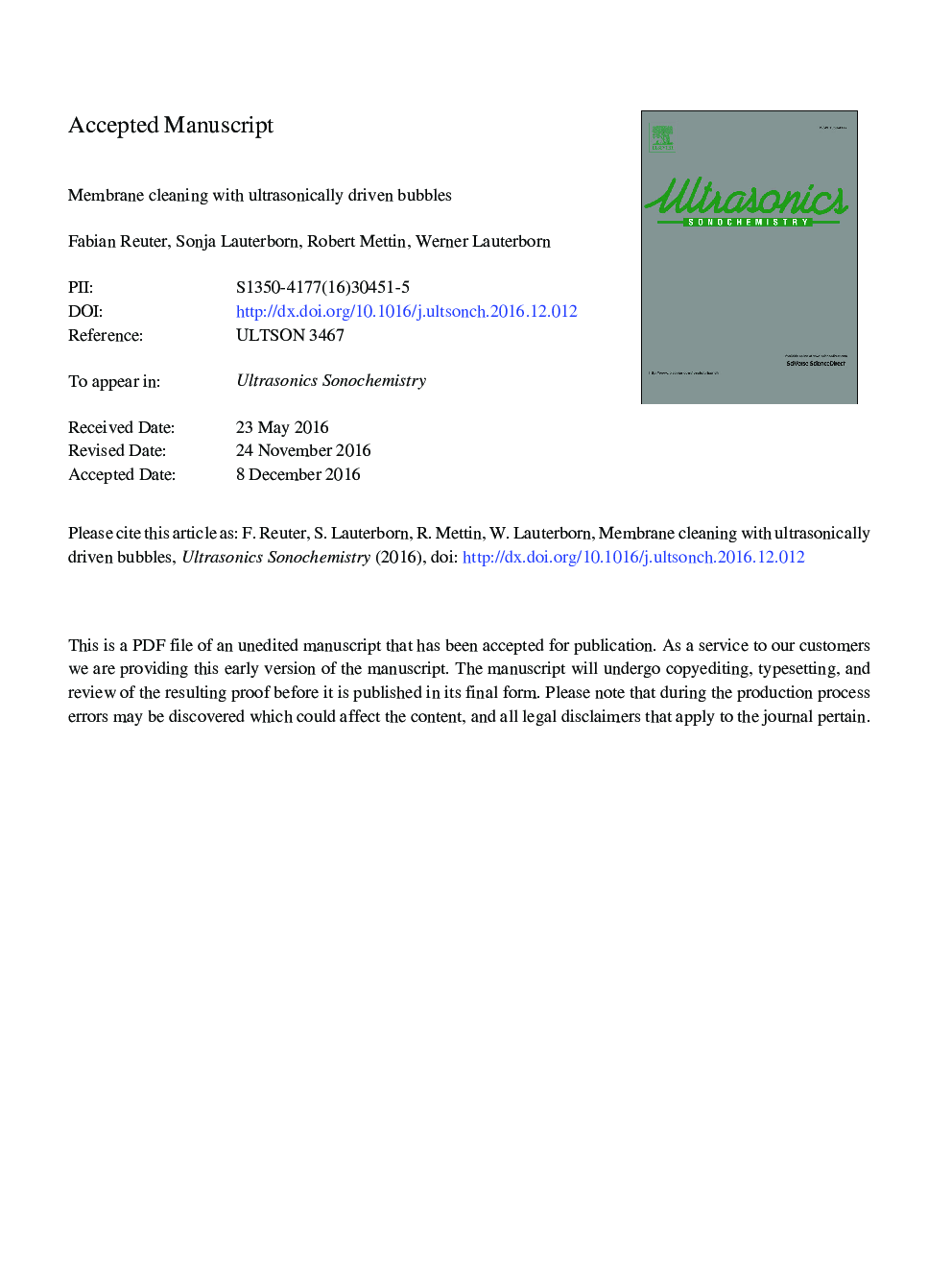| Article ID | Journal | Published Year | Pages | File Type |
|---|---|---|---|---|
| 5144842 | Ultrasonics Sonochemistry | 2017 | 62 Pages |
Abstract
A laboratory filtration plant for drinking water treatment is constructed to study the conditions for purely mechanical in situ cleaning of fouled polymeric membranes by the application of ultrasound. The filtration is done by suction of water with defined constant contamination through a membrane module, a stack of five pairs of flat-sheet ultrafiltration membranes. The short cleaning cycle to remove the cake layer from the membranes includes backwashing, the application of ultrasound and air flushing. A special geometry for sound irradiation of the membranes parallel to their surfaces is chosen. Two frequencies, 35Â kHz and 130Â kHz, and different driving powers are tested for their cleaning effectiveness. No cleaning is found for 35Â kHz, whereas good cleaning results are obtained for 130Â kHz, with an optimum cleaning effectiveness at moderate driving powers. Acoustic and optic measurements in space and time as well as analytical considerations and numerical calculations reveal the reasons and confirm the experimental results. The sound field is measured in high resolution and bubble structures are high-speed imaged on their nucleation sites as well as during their cleaning work at the membrane surface. The microscopic inspection of the membrane surface after cleaning shows distinct cleaning types in the cake layer that are related to specific bubble behaviour on the membrane. The membrane integrity and permeate quality are checked on-line by particle counting and turbidity measurement of the permeate. No signs of membrane damage or irreversible membrane degradation in permeability are detected and an excellent water permeate quality is retained.
Related Topics
Physical Sciences and Engineering
Chemistry
Chemistry (General)
Authors
Fabian Reuter, Sonja Lauterborn, Robert Mettin, Werner Lauterborn,
